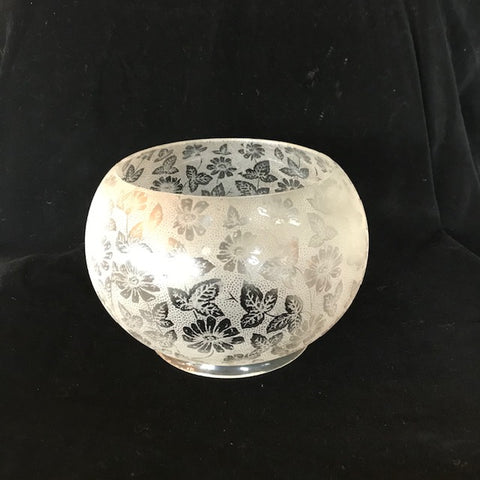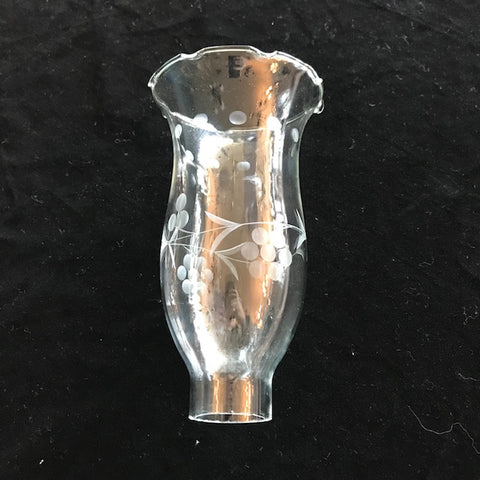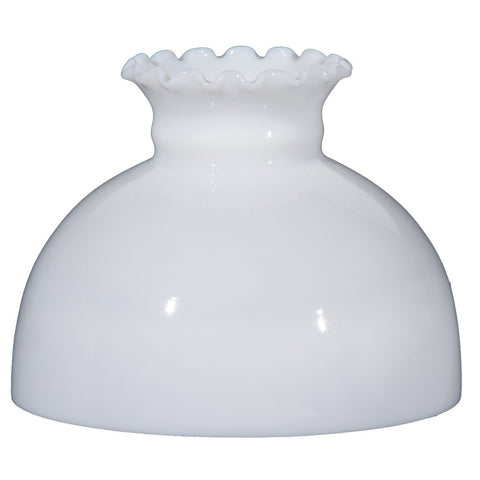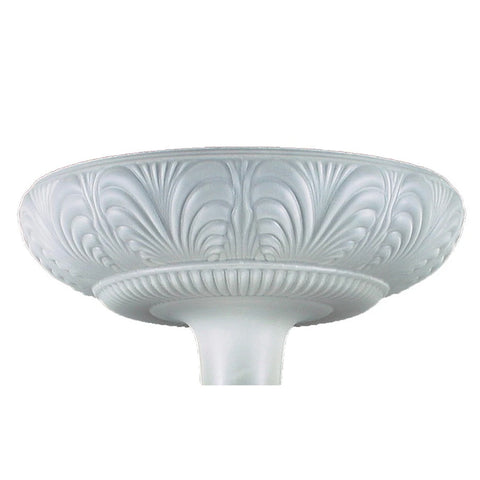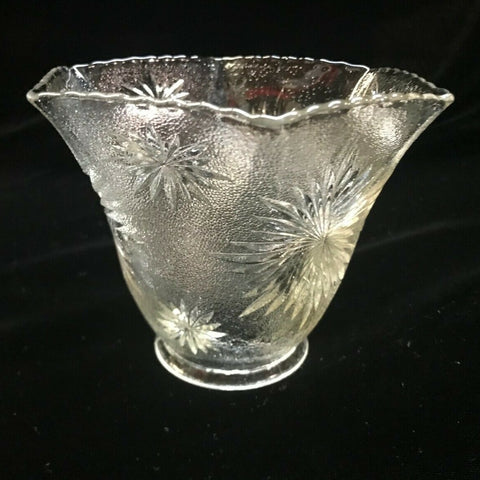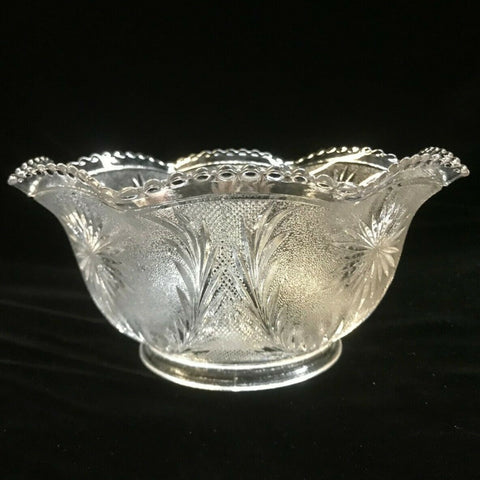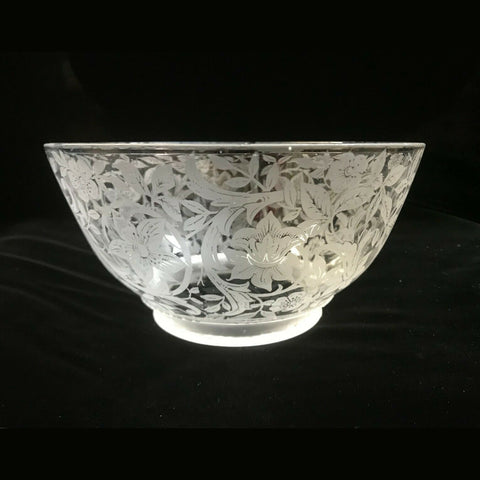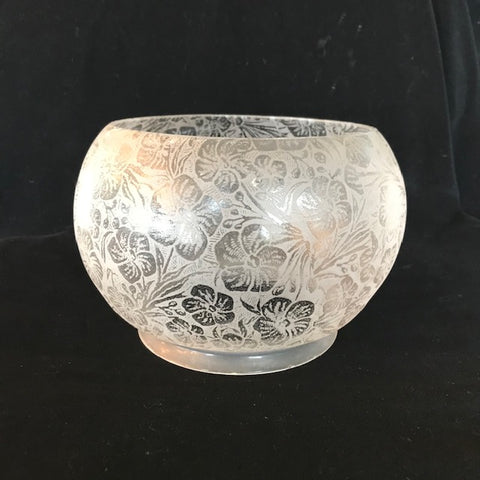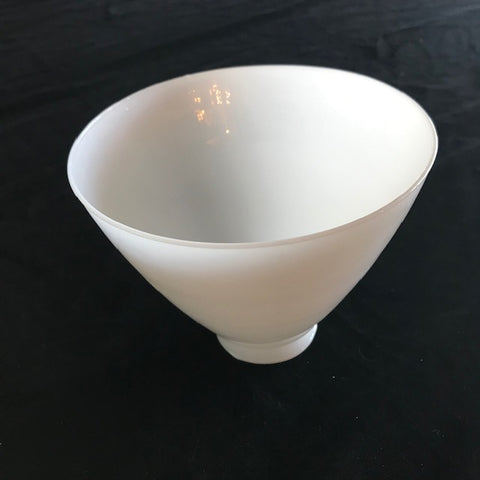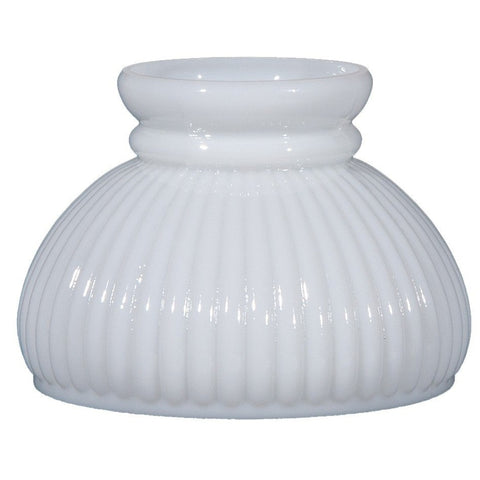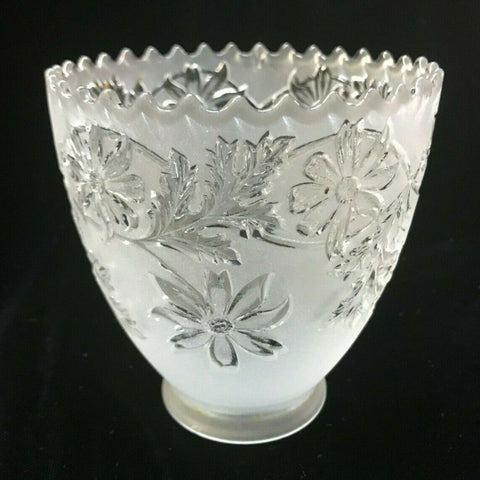SSG4 Antique Victorian Glass Shade, 5" Fitter
(Scroll down for What Size Sconce)
Check out our library for illustrated charts.
How wide of a chandelier do you need?
- Widths are measured as the diameter of the widest part of the chandelier.
- Simply add the width and length of your room and use this sum as a starting point. For example, if your room is 12´x14´, we would suggest looking for a 26" wide chandelier.Consider choosing slightly smaller if you think your room is overly full or close. Or consider going a bit larger for an open room or a room with a high ceiling.
- If you are placing your chandelier in a two story foyer, remember that the higher you hang a chandelier, the smaller it looks, so you can go bigger than the formula suggests.
- For living rooms, bedrooms, or baths where it is necessary to walk under the chandelier, you might need to choose smaller than the formula suggests.
How many lights should your chandelier have?
- Each of our sockets can carry 60 watts, but 40 watts is usually sufficient and more flattering to the chandeliers.
- Smaller rooms do fine with 6 to 8 lights, but larger rooms may require 8 or more lights if the chandelier is your only light source.
- Using a dimmer with allow you to adjust brightness as needed and add to the lifetime of your bulbs.
- To accentuate a tall ceiling, choose a crystal chandelier with an upper tier of lights. Or, choose a sconce with a center, taller arm.
What length should your chandelier be?
- Whatever fits!
- For a dining room, from your ceiling height subtract your table height, the distance you desire from the table to the bottom of the chandelier, and 4" for the ceiling hardware. This figure represents the maximum length that your chandelier can be. If your choice of fixture is shorter than this figure, you will need to use chain.
- For living rooms or other rooms that must have a walking clearance, 6´6" or more is an appropriate clearance. Subtract your desired clearance form your total ceiling height, less 4" more for hardware. This will give you your maximum chandelier length.
- Minimum height of a chandelier is the listed length plus 4" (the total measurement of the mounting hardware plus one link of chain).
What Size Sconce should you use?
- Choose between a single, double or triple sconce based on which look you and which will fit.
- Triple sconces are nice in a room with tall ceilings.
- Keep in mind that the outer arms on the crystal armed sconces will adjust a bit. You can count on the flexibility of 1-2 inches. The arms on the brass Victorian sconces will not adjust.
Nickel vs. Brass
On our crystal armed chandeliers, you have the finish choice of brass or nickel. The brass is a slightly shiny brass (not orange) and the nickel is a polished nickel. Why shiny metals? It matches the shine of the crystal. What parts are metal?
- Small supportive pieces under the crystal frame pieces.
- The pinning in the crystal. Usually this pinning will match the metal finish of your chandelier; however, there are occasions when we use nickel pinning on a brass finish because it blends with the crystal best.
- The chain and ceiling hardware.
- The wire that runs through the arms and to the ceiling is gold to match the brass choice or clear to match the nickel choice.
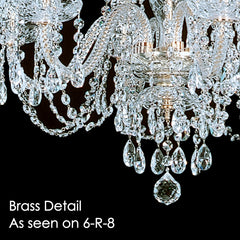

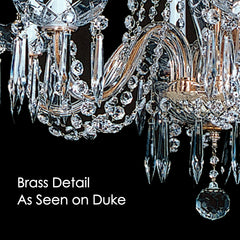
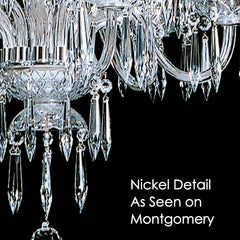

Almond: A pendant that is shaped like a faceted almond. More frequently called a pear, but we like almond better.
Arm: Crystal or metal piece that encases the wire and that supports the electrical socket. These may also be called “branches”.
Arm-to-arm festoons: Single strands of crystals that drape from one arm to the next arm. They may attach at the front of the arm, from the bobeche, or from some point on the arm itself.
Arm plate: In ours, a steel plate at the bottom of the stem. This is what supports the arms.
Asfour: An Egyptian manufacturer of crystal in business since 1961. They are a great and high quality option for leaded crystal.
Between-arm festoons: Double strands of crystal that drape from the top of the crystal chandelier to beneath the bobeches of the arms.
Bobeche: A dish shaped crystal piece. Historically, these were designed to catch wax dripping from candles.
Bottom: The crystal bobeches and hardware that are joined together to form one piece that covers the electrical connections at the bottom of the chandelier.
Break: The crystal columns that are stacked to form the stem.
Candelabra, Candelabrum: Multi-armed candle sticks designed to sit on a table or on the floor.
Candle cover: The sleeve that covers the socket.
Candle cup: A crystal or metal piece that supports the socket or candle.
Canopy: The piece that covers the electrical box at the ceiling.
Chandelier: A multi-arm hanging light.
Clarity: A quality associated with crystal in that a piece of hanging crystal is clear, not cloudy.
Cross-cut: A pattern of cuts that resemble x’s.
Crystal: Traditionally, crystal is what you get when you add lead to glass. Not only does the added lead give glass a weight and clarity, it makes the substance easier to cut. However, in these modern times when lead is always welcome, materials used for chandeliers are called crystal whether they have lead or not. Modern manufacturing can achieve clarity and refraction without lead.
Double tier: Two levels of arms so that the light bulbs appear on different levels.
Facet: The small, plane surfaces on a piece of crystal. The quality of the cut forming the facet, as well as the angle and arrangement of the facet, are important to the reflection/refraction of light.
Ferrule: The metal fittings on both ends of a crystal arm or on the end of a spire or scroll. Plaster is used to hold a crystal piece to the ferrule.
Festoon: A strand of crystal designed to drape or swag within the chandelier.
Finial: The final bottom point of a chandelier body. Frequently a crystal ball hangs from the finial.
Flush-mount: A flush mount chandelier will mount directly on the ceiling without any chain.
French pendalogue: Often known as “paper doll” or “leaf” pendant. These are the intricately shaped pendants that are most frequently found on French style chandeliers.
Full-cut: Refers to how a pendant may be cut. If it is full cut, all sides have facets; therefore, it will not lay flat on a surface.
Full festoons: Our crystal chandeliers with arm-to-arm festoons and between-arm festoons.
Gasolier: A chandelier that, historically, uses gas. Ours are reproductions that are wired for electricity.
Gas cut off, Gas cock: On original gas fixtures, these pieces regulated the flow of gas to the light source. On our Victorian chandeliers, they are ornamental.
Half-cut: Refers to how a pendant may be cut. If it is half-cut, it will lay flat on a table.
Hand-cut: Any cuts that are made to a piece of crystal that are made by hand. The term may refer to the finishing edge cuts or to the decorative cuts to the crystal.
Lustre: Another term for a candelabra , a crystal chandelier, or a crystal prism.
Machine-cut: Any cuts that are made to a piece of crystal that are made by a machine.
Medallion: Historically plaster, but most these days are made of a polymer. These are the decorative pieces that surround the electrical box on your ceiling.
Octagon: The buttons or beads that attach to most pendants are in the shape of an octagon. They may vary in size.
Pear: See Almond above.
Pendant: Any hanging crystal piece regardless of shape. Frequently called prism, pendalogue, pendelogue, doo-dad, thing-a-ma-bob, hangy-down, pear, bauble, tear drop.
Pendalogue: Usually used to identify a pendant that isn’t a prism or almond shape. Also pendelogue.
Precision: A quality associated with crystal that results in straight cuts.
Polishing: The smoothing of the surface of a piece of crystal.
Prism: A word usually used to identify a pendant with parallel sides.
Sconce: Any wall mounted light fixture.
Single tier: One level of lights. Good for shorter chandeliers.
Spire, Spear: A crystal obelisk that is usually set info a ferule with plaster. They may be notched or plain. Historically, these pieces helped to reflect light from the candle flame on chandeliers.
Stem: The center column of a crystal chandelier.
Swarovski: Austrian Company created in 1895 by Daniel Swarovski, a Bohemian inventor and visionary who invented the machine for cutting and polishing crystal jewelry stones.
Swarovski Elements: A branded name that referred to Swarovski Strass.
Swarovski Spectra: Another brand of Swarovski crystals. Swarovski Spectra has retired in 2020
Swarovski Strass: The brand name for the premium crystal by Swarovski. Retired in 2020.
Teardrop: A pendant that is shaped like a drop of water… Tear drops are generally smooth without any faceting.
Top loop: The top most part of the chandelier body. It is the loop that the chain hooks to.
Thumbprint: A pattern of indented circles.
Trimmings: All of the hanging pieces on a chandelier. The pendants, festoons, and balls.
U-drop: A thin prism that flares with multiple facets then goes to a point. Also called an icicle.
Waterfall, Wedding Cake Chandelier: We call these Tiers. They have concentric rings of pendants and is lit from the inside.








